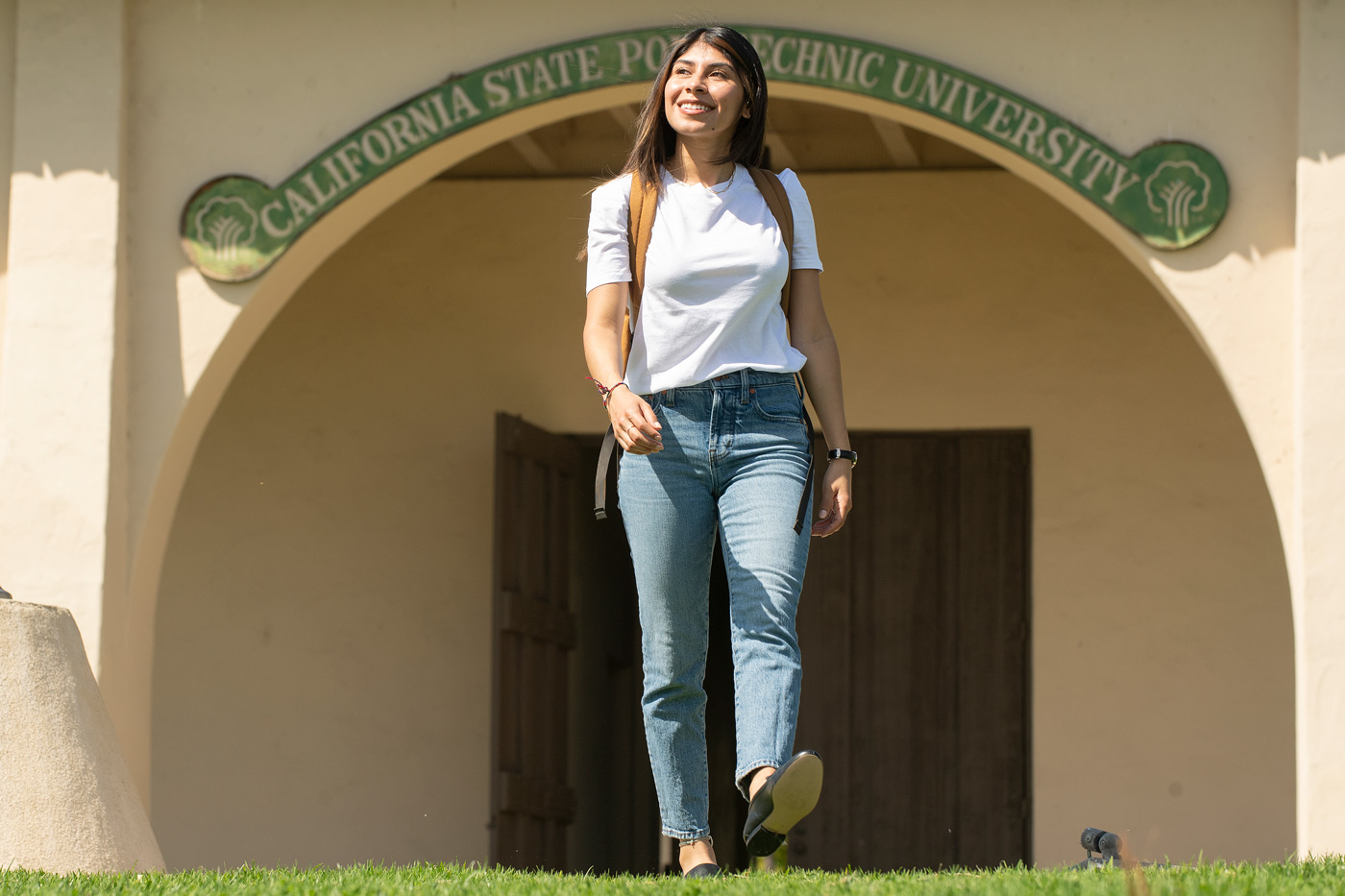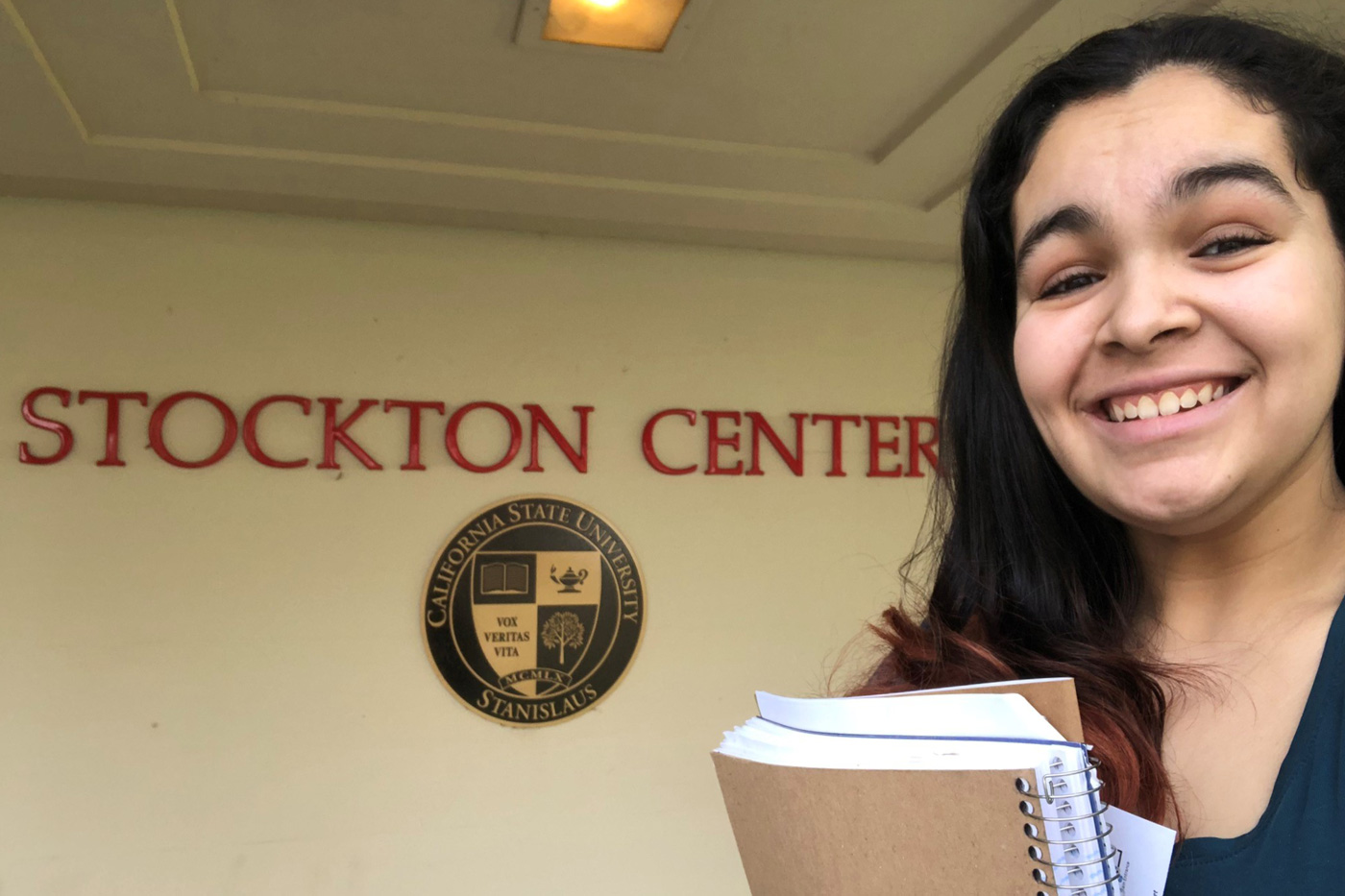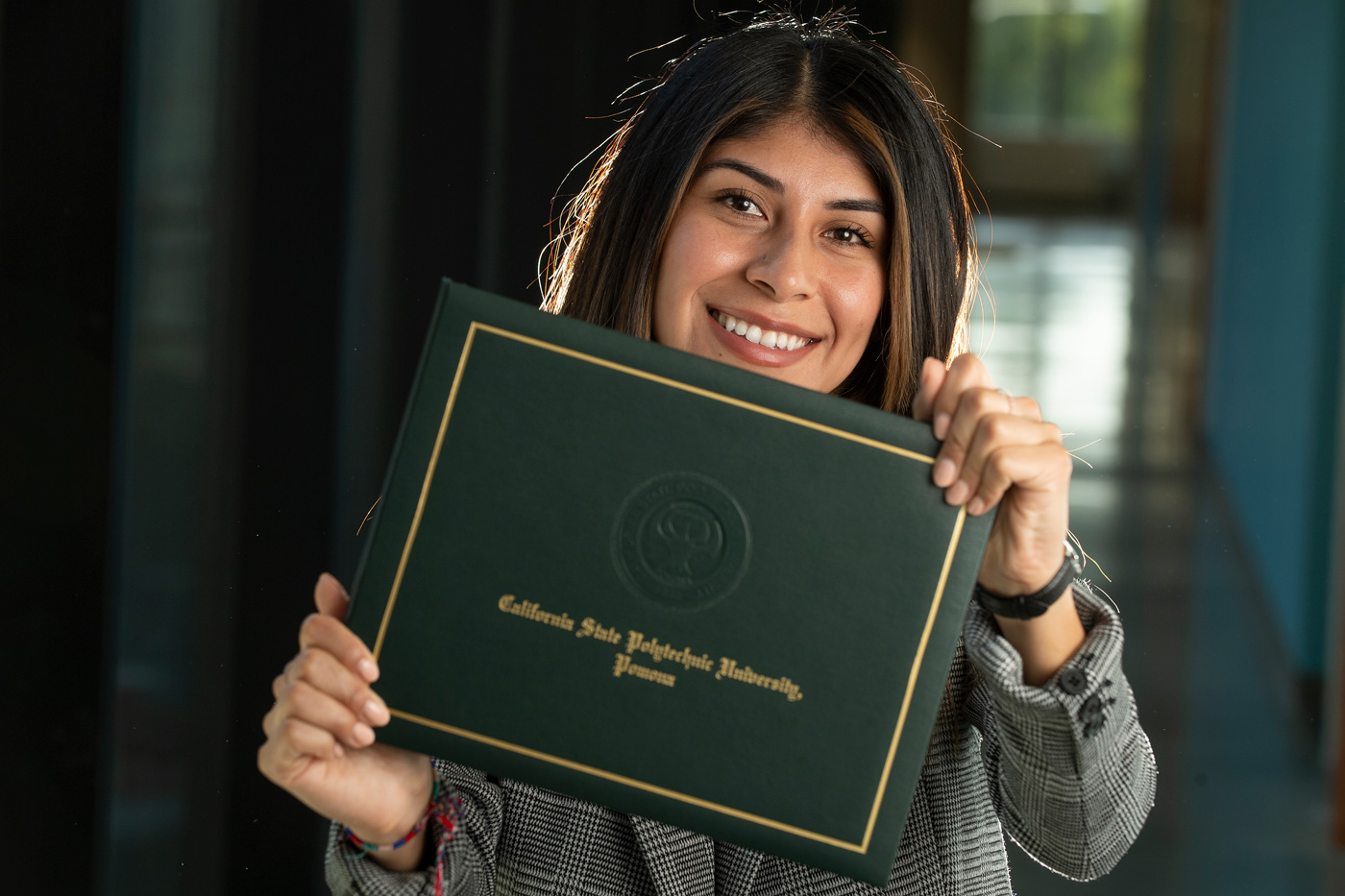Since the CSU launched
Graduation Initiative 2025 (GI2025) in 2015, the university has successfully increased graduation rates for both first-time freshmen and transfer students. Now the CSU is redoubling efforts to ensure all students, regardless of background, economic circumstance, race or ethnicity, have the equal opportunity to earn their degrees on time.
In early 2021, the CSU formed the GI2025 Advisory Committee to determine how best to reach the initiative’s goals and eliminate stubborn equity gaps that impact underrepresented students and students of color. University leadership has since adopted
five priorities:
- Reengage and reenroll underserved students
- Expand credit opportunities with summer/intersession
- Ensure equitable access to digital degree planners
- Eliminate administrative barriers to graduation
- Promote equitable learning practices and reduce DFW (D-F-Withdraw) rates
In this series, we’ll explore how CSU campuses have taken action to address each of these priorities, beginning with student reenrollment campaigns. During the pandemic, the CSU—like universities across the nation—saw a heightened attrition rate, especially for students of color. In response, campuses are carrying out reenrollment strategies to help these students get back on track to graduation.
“There’s no doubt that our students, especially those from historically underserved communities, faced a range of challenges through the pandemic,” says Executive Vice Chancellor of Academic and Student Affairs Sylvia A. Alva, Ph.D. “But our entire Cal State family is committed to reaching out, breaking down barriers and reassuring our students that their dreams of a CSU degree are within reach.”
Warm Welcome
In fall 2021,
San Francisco State University piloted an effort to contact 309 students from the fall 2019 cohort who’d left in good academic standing. This included Marissa Ledesma, who left SFSU at the end of her first year in spring 2020 when she struggled to find her place on campus and classes shifted to online. The next school year, she attended a community college in her hometown of Bakersfield, where she completed her general education requirements. As Ledesma began thinking of returning to a four-year, she picked up a call from SFSU that helped her connect with advising.
“It was very welcoming, and it made me feel like I was valued, that there was somewhere that wanted my attendance,” Ledesma says.
 “Returning this time and being able to connect with professors and other students who understand the types of things I want to talk about, like racial justice or equity, makes me feel very complete.” —Marissa Ledesma, SFSU student
“Returning this time and being able to connect with professors and other students who understand the types of things I want to talk about, like racial justice or equity, makes me feel very complete.” —Marissa Ledesma, SFSU student
The campus waived associated fees and gave her priority registration, while the advising team helped her re-apply for fall 2021, change her major to sociology and plan a virtual schedule so she could remain at home another year. Ledesma will return to campus in-person this fall for her senior year to complete her major requirements with a plan to graduate in spring 2023.
“I’ve struggled this long and I can continue through the rest, but I’m coming back with a new mindset,” Ledesma says. “As I return back, I do feel more acceptance, because I feel like the quality of education here and the type of content they teach us aligns with what I want to learn.”
SFSU’s reenrollment efforts have been expanded to other students who didn’t enroll in fall 2021 or spring 2022, and the campus has contacted more than 1,500 students.
California State University, Bakersfield launched its own strategy in early 2022 to quickly reenroll students who left in good academic standing after being enrolled in the fall 2019 or 2020 terms. The call center individually contacted 448 students, offering a $1,000 grant for students who reenrolled full-time for spring or fall 2022. The grant was prorated according to units for students who enrolled part-time.
“Information flies at this generation at a wild pace, and we think you can just send an email or text message. But when a phone call comes in and a human voice says, ‘We want you, we’re thinking about you, we miss you, how can we help you get back,’ that means a lot,” says Dwayne Cantrell, Ed.D., CSUB associate vice president of Enrollment Management and chief enrollment officer. “We have to be more intrusive in our engagements with our students for reenrollment, retention and graduation.”
The campus is also hiring an individual to help students reenroll, track their progress throughout the semester and connect them with resources like the 24-hour tutoring service—and the CSUB Student Affairs team created a program to pair reenrolling students with campus mentors. In addition, for students who left while not in good standing, the campus will offer scholarships covering their extended education courses needed to reenroll.
Campus Check-Up
These efforts to help students reenroll are particularly important in light of the COVID-19 pandemic. At
California State Polytechnic University, Pomona, the student success team began monitoring enrollment daily once spring 2022 registration opened in October 2021 and saw the largest enrollment drop-offs among the “COVID cohorts,” students who started in the fall 2019, 2020 and 2021 terms.
“There is a disparate impact on our underrepresented students,” says S. Terri Gomez, Ph.D., CPP associate provost of Student Success, Equity and Innovation. “When we look at the data, we see higher percentages of minoritized, underserved students, particularly Latinx and African Americans, who did not enroll. That has potentially a very serious impact on equity gaps and graduation rates.”
In November 2021, the team employed an artificial intelligence chatbot—Billy Chat—to ask students why they weren’t registering for courses. Some didn’t see the urgency in registering for classes, and some faced barriers with regards to campus policies or finances. Others just didn’t realize they hadn’t completed registration and had courses in their online “shopping carts.” To address this challenge, the team identified these students and made their “shopping carts” visible to advisors so they could contact students directly and help them complete the process.
Later, the team opened an additional registration period for these students and hosted a virtual queue on a Saturday morning when students could Zoom in with questions about registration.
“We want to encourage students to develop help-seeking behaviors, but I think it’s important we reach out to them so they don’t feel like they’re lost amid 27,000 students,” says Cecilia Santiago-González, Ed.D., CPP assistant vice president of Strategic Initiatives for Student Success.
CPP, though, is building on campus reenrollment efforts already in place before the CSU introduced its plan to eliminate equity gaps.
 “All the obstacles I faced during college—failing, coming back, failing, coming back—has helped me to be where I am today.” —Monica Say, CPP student
“All the obstacles I faced during college—failing, coming back, failing, coming back—has helped me to be where I am today.” —Monica Say, CPP student
The work helped Monica Say, who began her first year at CPP in 2013, reach the finish line. The computer science major dropped out the first time following the spring 2016 term when both her parents lost their jobs, and she couldn’t afford tuition. But upon receiving a campus email to students who hadn’t enrolled for that fall, she decided to respond and share her story.
“Everything started for me replying to that one email,” Say says. “I got all my courses for that following fall, so I did not have to miss any quarters. I got all my classes I needed. I was on track to finishing school. I also got a job on campus so I could earn some money to pay for school.”
Say walked at commencement in 2018, only to learn she’d failed her final two math classes. She retook both classes and failed them again, at which point she wanted to give up.
“A lot of faculty and staff messaged me, and they told me, ‘You are two classes away. You can do this, and we’re here to help you succeed,’” she recounts. “I needed that motivation, and I went back to school and finished my degree. … The reenrollment effort is very important for students to see there is help from faculty, staff and the CSU.”
After passing those courses in 2021, Say began a master’s program in computer science at CPP.
Good Guidance
After helping students reenroll, campuses are then ensuring they have the academic guidance they need going forward.
California State University, Stanislaus provides targeted support for returning students as they go through the onboarding process and continue on the path to graduation.
Stanislaus State communications major Victoria Castro-Chavez knows the importance of good advising. She took a gap semester in spring 2021 after struggling with health complications, losing several family members, working full-time, caring for her family and failing to pass most of her previous semester credits while a full-time student.
With support from the campus, Castro-Chavez reenrolled in fall 2021 as a part-time student, though still on academic probation. Her advisor helped her connect with resources to access financial aid and improve her academic standing. The two meet three times a semester to plan a schedule that aligns with her work calendar and ensure she’s on track to graduate in spring 2023.
 “[Earning my degree is] the end goal for me, because everybody is continuing their education for something they care about or something that inspires them, and I’m going to school to be a high school teacher.” —Victoria Castro-Chavez, Stanislaus State student
“[Earning my degree is] the end goal for me, because everybody is continuing their education for something they care about or something that inspires them, and I’m going to school to be a high school teacher.” —Victoria Castro-Chavez, Stanislaus State student
“The four-year plan is not realistic for all current, modern-day college students because people have to work, have kids or have other aspects in their lives they have to take care of,” Castro-Chavez says. “I’m a prime example. … The resources from the Academic Success Center help me to continue to be part-time, and my academic advisor helped me with things, like my appeals for financial aid, to stay in school.”
Similarly, CPP has early support specialists who check in with students who faculty identify as needing support to pass the course.
“Our expectation is every one of our students will have a person who will notice they didn’t enroll, who will notice they didn’t pass that class, who will make that connection,” Dr. Gomez says. “We have to be in a position to serve students better.”
Breaking Barriers
While addressing
administrative barriers to graduation is its own GI2025 priority, campuses took steps as part of their reenrollment efforts to address barriers that specifically prevented students’ return. These included removing registration holds on students with outstanding debt, using the Higher Education Emergency Relief Fund (HEERF) to pay off debts and streamlining the reenrollment process.
For example, Stanislaus State increased the amount of money students could owe without being dropped, used HEERF to provide additional financial aid and extended the number of terms a student could not enroll and still receive a registration date. In addition, the campus introduced a form for students who had been absent for up to three years to request to reenroll without having to reapply.
“In the beginning of the pandemic, before we had these reenrollment initiatives well established, we saw significant drops in persistence in higher education statewide, particularly among traditionally underrepresented minority (URM) students,” says Brandon Price, Ed.D., Stanislaus State interim associate vice president of student success. “Reversing the decline in persistence among URM students was a priority systemwide, but was particularly critical at an institution like ours where the majority of the students are traditionally underrepresented minority students whose education was much more likely than their peers to be disrupted by COVID-19.”
CPP instituted a temporary lift on financial holds blocking registration and provided debt relief using HEERF funds. The campus also extended students’ formal leaves of absence by one term and increased the number of terms, from one to two, that students could not enroll without losing their spot.
“As an institution, we have to be more intentional about serving and intervening in real time with students who have fallen off track or are facing serious challenges,” Gomez says. “Despite everything they have been facing, they are still clawing their way to a degree.”
HEERF funding proved helpful in removing other administrative barriers, too. After all she went through to finally complete her bachelor’s, Say couldn’t receive her diploma due to her outstanding tuition balances. She had even started her company, Code with Nano, teaching children to code to pay off the amount, but hadn’t been able to do so. Then in March 2022, CPP used HEERF funding to pay off the last of her debt, so she could receive her diploma.
 “A lot of [returning] for me was mostly fear. I was scared to be a part of this, I was scared to look for help or I was scared to not get that answer that I wanted. But the emails, coming back and that support helped a lot.” —Monica Say, CPP student
“A lot of [returning] for me was mostly fear. I was scared to be a part of this, I was scared to look for help or I was scared to not get that answer that I wanted. But the emails, coming back and that support helped a lot.” —Monica Say, CPP student
“How amazing it is that these scholarships are given to us students to help us pay for this debt!” Say says. “I just felt so blessed. … Cal Poly has been such an amazing school to me and has helped me out, not once, but twice. They really help their students succeed.”